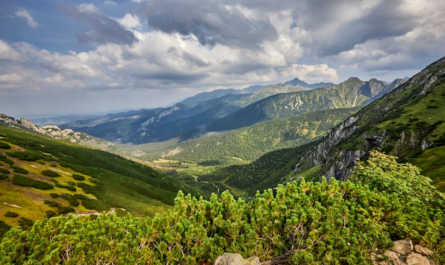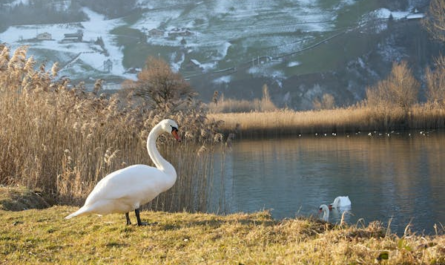Alpbach, a attractive village located in the Tyrolean Alps in Austria, is widely known for its magnificent landscapes, rich cultural heritage, and well-preserved traditional Alpine architecture. However, the village’s history has been shaped by more than just its scenic beauty and cultural significance. Like many parts of Europe, Alpbach was profoundly affected by the ravages of World War II, which left indelible marks on its infrastructure, economy, and social fabric. Despite these challenges, the village emerged from the war with a remarkable restoration journey that transformed it into the charming destination we know today.
1. Alpbach Before the War: A Village in Harmony with Nature
Before World War II, Alpbach was a tranquil alpine village known for its farming community and its deep connection to the natural environment. The economy was largely based on agriculture, particularly dairy farming and the cultivation of crops suited to the harsh mountain terrain. The people of Alpbach lived simple, rustic lives, surrounded by stunning landscapes, with wooden chalets and traditional buildings that had been passed down through generations.
Alpbach had a close-knit community where local customs and traditions were carefully preserved. Its location in the Tyrolean Alps made it a relatively isolated village, but it also gave it a distinct cultural identity that was deeply rooted in Austrian heritage. Little did the people know, this idyllic setting would soon become the backdrop for some of the darkest years in European history.
2. The Destruction of Alpbach During World War II
The outbreak of World War II in 1939 marked the beginning of a turbulent period for Alpbach. The village, like much of Austria, found itself drawn into the conflict as part of Nazi-occupied territory. Although Alpbach was not the site of large-scale battles or military operations, it still felt the effects of the war in devastating ways.
The village was significantly affected by air raids and bombings, which destroyed key infrastructure, including roads, bridges, and buildings. The war effort drained resources from local communities, making it increasingly difficult to maintain the village’s traditional way of life. Many men from Alpbach were drafted into military service, leaving the women and children behind to fend for themselves. The civilian population suffered from food shortages, loss of livelihoods, and the constant fear of attack.
In addition to the physical destruction, the war also had a psychological toll on the people of Alpbach. The village, once a serene and peaceful haven, was now marked by the scars of violence and devastation. Families were torn apart, and the collective trauma of war was deeply ingrained in the minds of the villagers. The war years were some of the darkest in Alpbach’s history, but they also set the stage for the village’s remarkable recovery.
3. The Restoration and Revival of Alpbach
In the aftermath of World War II, Alpbach faced the daunting task of rebuilding. The village had been physically damaged, and its once-thriving agricultural economy had been disrupted. However, the resilient people of Alpbach were determined to restore their community to its former glory.
The restoration journey was long and challenging, but it also sparked a sense of unity and pride among the villagers. The first step in the process was clearing debris and repairing essential infrastructure, such as roads and bridges, which had been destroyed during the war. This was critical to reopening trade routes and connecting Alpbach with the rest of Austria and Europe.
One of the most remarkable aspects of Alpbach’s restoration was its commitment to preserving its architectural heritage. Unlike many other European villages that suffered from modern, post-war reconstruction projects, Alpbach made a conscious decision to restore its buildings in a way that honored traditional Tyrolean architecture. The village adopted a uniform style for new buildings, ensuring that they blended seamlessly with the traditional wooden chalets that had long been the hallmark of the village.
The restoration process also involved revitalizing the local economy. With agriculture struggling in the wake of the war, the people of Alpbach began to look toward tourism as a potential source of income. By promoting the village’s natural beauty, cultural heritage, and traditional way of life, Alpbach gradually attracted visitors seeking an authentic Alpine experience.
The village’s cultural revival was another key component of its restoration journey. Alpbach’s inhabitants worked to preserve their customs and traditions, while also integrating new ideas and innovations that emerged in the post-war period. In 1945, the village’s cultural society was founded, which played a central role in organizing events and preserving the region’s folklore and traditions.
4. Alpbach Today: A Symbol of Resilience and Restoration
Today, Alpbach stands as a shining example of resilience and restoration. Despite the hardships it faced during and after World War II, the village has preserved its unique charm and character. Alpbach’s commitment to preserving its cultural heritage and natural beauty has made it one of the most sought-after destinations for tourists in Austria.
The village is renowned for its traditional wooden houses, which remain a hallmark of the Tyrolean architectural style. The Alpbach Architecture Prize, established in 1974, celebrates contemporary architecture while ensuring that new buildings respect the village’s historical and architectural identity. This delicate balance between tradition and modernity has helped Alpbach maintain its status as a cultural and architectural gem.
In addition to its architectural beauty, Alpbach has become famous for its role as a center for intellectual exchange. Since 1945, the village has hosted the annual European Forum Alpbach, a conference that brings together thought leaders from around the world to discuss topics related to science, politics, and culture. This event has cemented Alpbach’s reputation as a hub for innovation and dialogue, further demonstrating the village’s resilience in the face of adversity.
Alpbach’s restoration journey is a testament to the strength and determination of its people. The scars of World War II may still be visible in the memories of those who lived through it, but the village itself stands as a symbol of hope, renewal, and the power of community.
5. Lessons from Alpbach’s Resilience
The story of Alpbach’s recovery from the devastation of World War II offers valuable lessons about resilience, community spirit, and the importance of preserving cultural heritage. In the face of overwhelming destruction, Alpbach was able to rebuild not just its infrastructure but also its sense of identity and pride. The village’s commitment to restoring its architectural heritage and promoting cultural tourism has allowed it to thrive in the post-war era, becoming a beacon of hope for other communities affected by conflict.
As we reflect on the impact of World War II on Alpbach and its restoration journey, we are reminded of the enduring power of resilience in the face of adversity. Alpbach’s story serves as an inspiration to us all, showing that even in the darkest of times, there is always hope for renewal and recovery.



